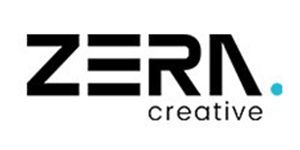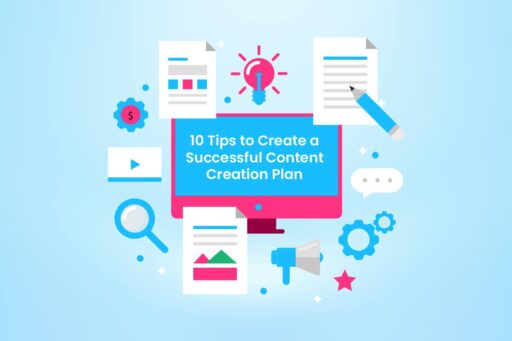In today’s digital age, content creation has become crucial to building an online presence and engaging with your target audience. However, creating content can be a daunting task without a solid plan in place.
A successful content plan helps you define your goals, understand your audience, develop a strategy, and create content that resonates with your audience. In this era of information overload, it’s essential to stand out from the crowd by creating high-quality and relevant content.
Here are 10 super tips to help you create a successful content creation plan:
1. Define Your Goal
The first step in creating a successful content creation plan is to define your goals. What do you want to achieve through your content? Is it to generate leads, increase traffic to your website, or establish yourself as a thought leader in your industry?
Define your goals and create a plan to achieve them. Determine what you want to achieve through your content, such as increased brand awareness, lead generation, or sales.
2. Know Your Audience
Creating content that resonates with your target audience is key to successful content creation. Here are some 4 tips for crafting value-based, well-written content.
Understand your Audience: Before you start creating content, make sure you understand who your target audience is. What are their interests, pain points, and needs? What motivates them? By knowing your audience, you can create content that speaks directly to them.
Provide Value: The content you create should provide value to your audience. This means offering something that they can use or apply in their lives. Consider creating how-to guides, tutorials, or case studies that showcase how your product or service can solve their problems.
Be Authentic: People can tell when you’re not being genuine. Don’t try to be someone you’re not. Instead, write in your own voice and share your own experiences. This will help you connect with your audience on a deeper level.
Use Storytelling: People love stories, and they can be a powerful tool for conveying your message. Consider weaving stories into your content to help illustrate your points and make your content more engaging.
3. Develop a Content Strategy
Create a content strategy that identifies the formats you’ll use to produce your material, the subjects you’ll cover, and the platforms you’ll use to distribute it. Based on your objectives and audience research, specify the subjects, types, and distribution methods for your content.
This will assist you in developing a coherent and engaging content strategy to build a social media company that is worth it for your business in the long run. Developing a consistent brand voice moreover can define your brand’s personality, and messaging, resulting in a unified approach to your content across all channels.
4. Create a Content Calendar
Creating a content calendar is essential for staying organized and on track with your content creation. It allows you to plan your content, ensuring you have a steady stream of content to share with your target customers.
Furthermore, it helps you stay organized and provide a steady stream of content to share with your audience. A successful content creation then becomes a buy product for businesses if they have the knowledge about organizing multiple channels at the right time.
5. Determine the Best Content Formats
There are various content formats you can use, such as blog posts, videos, infographics, podcasts, and more. Determine which designs resonate with your target audience and align with your goals.
Examples include blog posts, videos, social media posts, email newsletters, and webinars. You can take inspiration from them to create an ultimate social media marketing strategy to grow your existing business.
6. Use SEO Best Practices
Using SEO best practices is crucial to creating a successful content creation plan. SEO simply means optimizing your content to rank higher in major search engines. Using relevant keywords, and optimizing your meta tags can improve your website’s visibility and attract more traffic.
Research keywords pertinent to your business and incorporate them into your content naturally and organically. Focus on creating high-quality, informative content that adds value to your audience.
7. Consistency is Key
Consistency is crucial in content creation. It helps build trust with your audience and ensures that they know what to expect from you. Create a consistent publishing schedule and stick to it. This will also help you add to stay top of mind with your audience.
8. Repurpose Your Content
Repurposing your content is a great way to get more mileage out of your content. For example, you can turn a blog post into a video or create an infographic from a podcast episode. This will help you reach new audiences and get more value from your existing content.
9. Measure Your Result
Measuring your results is a critical component of a successful content creation plan. By tracking key metrics, you can determine what is working and what isn’t and adjust your strategy accordingly. Use analytics tools to track traffic, engagement, and conversions to come up with a updated website design.
Analyze the data to see which types of content resonate with your audience, and adjust your strategy to focus on creating more of that content. You can optimize your content strategy to achieve your business goals and maximize your ROI by continuously monitoring your results.
10. Stay Up-to-Date
Staying up-to-date is essential to creating a successful content creation plan. The digital landscape constantly evolves, and new technologies and trends emerge daily. To stay ahead of the curve, it’s essential to keep learning and growing your skills.
Attend industry conferences, webinars, and workshops to keep informed about the latest developments in content creation.
Conclusion
Creating a successful content creation plan takes time and effort, but the benefits are well worth it. By defining your goals, understanding your audience, and developing a strategy, you can create high-quality content that resonates with your audience and drives results for your business.
Remember to stay consistent, measure your results, and stay up-to-date with the latest trends and best practices.







